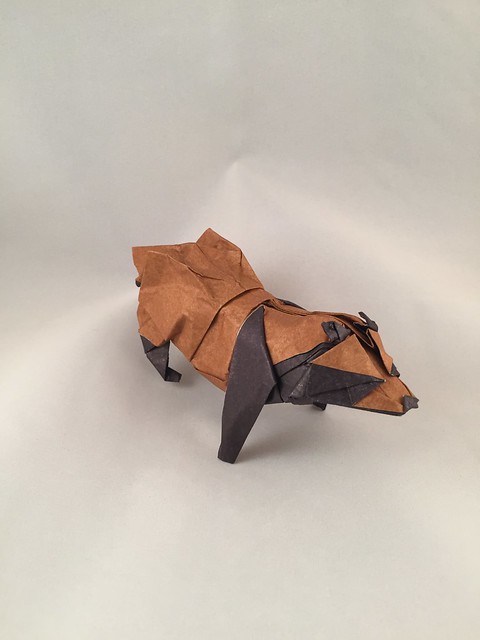I'm an amateur and a hack folder when it comes to Origami, especially compared to Brimstone and Baltoriamist. Fortunately, it's my hobby, not my day job.
One of my young engineers was with me at lunch and watched me fold a $Shirt to leave for a tip. I explained the landmarks, but he just picked it up by observation ... he doesn't fold. It takes me a few minutes, no more than 3 minutes to fold a tip - roughly the time for the waitress to return with my credit card.
The engineer took 10 minutes to fold his. As we watched him fold his first one, we figured, 'slow beginner, and not that interested in Origami. When he finished, we were floored! It was precise and perfect, and a piece of art. I got mine back from the waitress, and traded with her. We see it framed in the restaurant every time we visit.
When I fold it, it looks like a 'crumbled dollar' compared to his which looked like pristine, proof-condition, crisp uncirculated minted, one of a kind sculpture. ... And, it's not even a hobby for him.
But, he takes the time, and in his Origami, as well as all of his work, he produces Quality. And, this is visible to Everyone. People think my origami is cool, b/c it is unusual. Everyone recognizes his work as Quality and as Art. [On a different note, he has no clue how to self-promote.]
Story #2:
Long, long ago in a place far from here, there were many different flavors of MP3 players ranging from butterscotch to earwax. They were inexpensive and had infinite functions, competing as commodities on increasing technology.
Then, Apple invented the iPod. It does one thing: it stores and plays music. It also has a massive support infrastructure to support it, but the Quality, the feel, the User Experience are what set it apart. Not the technology.
Then, Apple made the iPhone. Other companies competed, making their phones smarter, longer-lived, larger, or with more technology... And incrementally they were left behind, because they weren't even in the same ballpark. They never thought about the Quality, the feel, and especially, the User experience ... and now it's too late. There's a saying that once people try Apple products - iMac, iPod, iPhone, iPad, Apple Watch ... Apple TV... Apple Car
Luxury can be like quality: "Luxury, once tasted, becomes necessity."
If you have the patience [without obsessing forever], Quality wins!


